
Almost everyone enjoys shrimp, down to the smallest and pickiest of eaters. If you have a package of breaded shrimp in your freezer, you can always produce a quick meal or appetizer on short notice. Deep-frying them can be problematic when you have kids underfoot -- or if you don't want the extra fat -- so it's often more convenient and healthier to oven-bake the shrimp instead.
Commercial Shrimp
Most brands of commercially-produced breaded shrimp can be prepared either by frying or baking. The instructions on your package will usually advise you to preheat your oven to 425 or 450 degrees Fahrenheit, and to bake the shrimp for 14 to 16 minutes. Small shrimp and butterflied shrimp usually take less time, while larger whole shrimp can take longer. Usually they'll need to be turned about halfway through their baking time, to crisp and cook evenly. The good news is that commercial shrimp will usually bake up crisp and golden in your oven. The bad news is that they do so because they already have a lot of fat in the breading.
Breading Your Own
You can counter that by making your own breaded shrimp, which puts you in control of their nutrition and calorie count. The next time you have the opportunity to buy shrimp at a bargain price, stock up and set aside an afternoon to prep them. To use the classic technique, toss the shrimp in flour then dip them in milk, finishing them with the breadcrumbs. Alternatively you can dip them in beaten egg white, and then in the breadcrumbs. Lay them on a parchment-lined baking sheet and freeze them, then package them into portion-sized freezer bags for storage.
Preparing Your Own
To bake your home-breaded shrimp, preheat the oven to 425 or 450 degrees Fahrenheit. Arrange the shrimp in a single layer on a sheet pan, and spray them lightly on both sides with pan spray or a manual spray bottle filled with unsaturated oil. The oil isn't strictly necessary, but it gives your shrimp more of the golden color and crisp texture that makes them so enjoyable. Baking your shrimp on the top rack will also help them brown more effectively. Bake them for 14 to 18 minutes, depending on their thickness, turning them once.
Variations
Reducing the fat content is a good reason to make your own shrimp. Another is that it gives you an opportunity to play with flavors. Try marinating the shrimp briefly before you bread them, or seasoning them with a dry spice rub. Use panko-style breadcrumbs rather than the traditional kind, to make them extra-crunchy. Dried, flaked coconut makes an excellent breading alternative, and dried or finely-minced lemon or lime zest complements the coconut coating beautifully. You can even coat the shrimp in crushed sliced almonds, for an unusual flavor and texture.
Related Articles

Can You Fry Wings After Baking Them?

Can I Use Flour to Make Breaded Shrimp?

Jumbo Shrimp Nutritional Facts
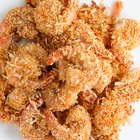
How to Make Coconut Shrimp
Frying Shrimp in a Light Batter or Flour
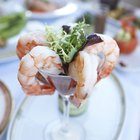
How Long Can Shrimp Be Refrigerated?

Can You Deep-Fry Frozen Uncooked Shrimp?
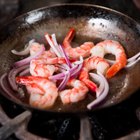
How to Cook Shrimp in a Skillet

How to Cook Shrimp With Butter
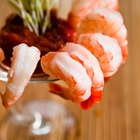
How to Cook Shrimp to Serve Chilled

How to Straighten Shrimp for Tempura
Do I Steam or Boil Shrimp?

How to Thaw Frozen Cooked Shrimp Quickly
Can I Use Vinegar in a Shrimp Marinade?

Do I Peel Shrimp Before They Are Boiled?
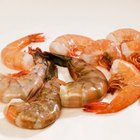
How to Cook Frozen Shrimps That Still ...
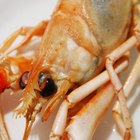
How to Prepare and Eat Raw Shrimp
How to Cook Whiting in the Oven

Can You Fry Wings After Baking Them?

How to Cook Alabama Red Shrimp
References
- Seapak: Jumbo Butterfly Shrimp
- Professional Cooking; Wayne Gisslen
Resources
Writer Bio
Fred Decker is a trained chef and certified food-safety trainer. Decker wrote for the Saint John, New Brunswick Telegraph-Journal, and has been published in Canada's Hospitality and Foodservice magazine. He's held positions selling computers, insurance and mutual funds, and was educated at Memorial University of Newfoundland and the Northern Alberta Institute of Technology.
Photo Credits
Medioimages/Photodisc/Photodisc/Getty Images